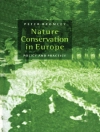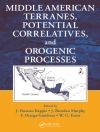Comparative Evaluations of Innovative Fisheries Management begins with a look at four places outside the European Union known for innovative management: New Zealand, Nova Scotia, Alaska and Iceland. Then the focus shifts to the success criteria related to specific disciplines including biological and social robustness, economic efficiency and impacts on management costs. Hypotheses are tested using data capable of generating useful results. The main conclusions include a retrospective of how key concepts defined and represented the various perspectives, skills and backgrounds that made up the multidisciplinary CEVIS project.
Jadual kandungan
Introduction: The CEVIS Idea.- The New Zealand’s Quota Management System (QMS) and its Complementary Mechanisms.- Rights-Based Management and Participatory Governance in Southwest Nova Scotia.- Abundant Fish Stocks and Profitable Fisheries off Alaska – A Study on Harvest Control Rules and Pollock Cooperatives.- The Icelandic ITQ System.- Evaluating Biological Robustness of Innovative Management Alternatives.- Evaluating Economic Efficiency of Innovative Management Regimes.- Understanding Social Robustness in Selected European Fisheries Management Systems.- Costs of Management in Selected Fisheries.- Legal Aspects of Individual Transferable Quotas.- How to Compare (the Efficiency of) Fisheries Management Systems?.- Conclusion: The Innovation Evaluation Framework.












